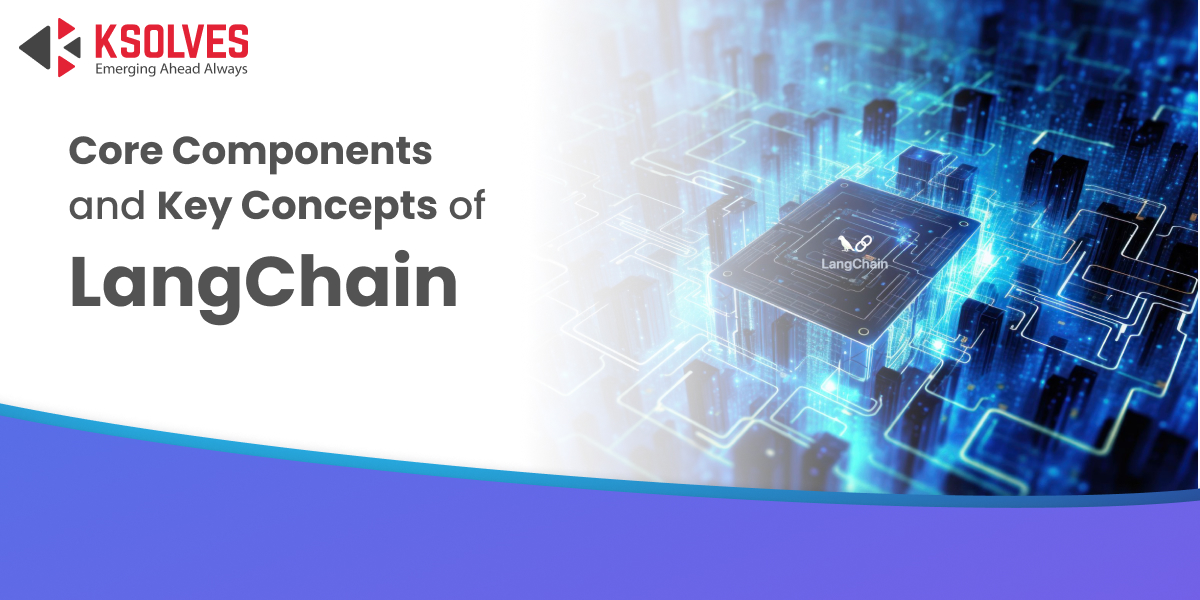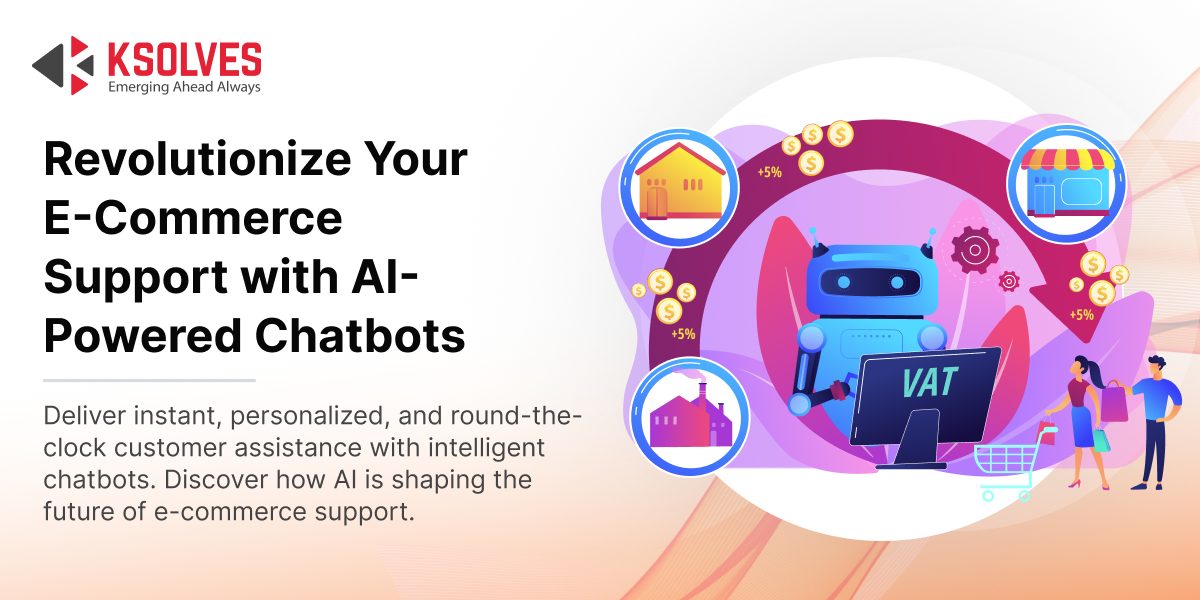Understand the Core Components and Key Concepts of LangChain
AI
5 MIN READ
July 16, 2024
![]()

Artificial intelligence is a dominant force in today’s world. Constant upgradation and updation have resulted in immense growth in the technical ecosystem. Hence, with the introduction of ChatGPT, there has been an unprecedented surge in the favor of large language models (LLMs).
Considering the LLM’s capability of enhancing product development procedures, utilizing the technology for application development is pivotal. LangChain is one among various tools used to create these kinds of applications. The LangChain for LLM application development facilitates the process of developing apps that leverage LLMs.
What is LangChain?
LangChain is an open-source framework that gives developers the tools they need to create applications using large language models (LLMs). In its essence, LangChain is a prompt orchestration tool that makes it easier for teams to connect various prompts interactively.
To avoid having the user explicitly provide every single step and choose the sequence of execution, you can use LLMs to produce the next step at each point, utilizing the prior step results as its context.
The LangChain framework can do that for you. It arranges a succession of prompts to reach a desired result. It provides a simple interface for developers to interact with LLMs. That way, LangChain works like a reductionist wrapper for leveraging LLMs.
Components of LangChain
LangChain is a framework designed to build applications that utilize language models. Here are the key components of LangChain, organized as per your request:
1. Schema
LangChain’s schema establishes the data structures and formats that are utilized by programs, guaranteeing interoperability and consistency among various parts. It has data validation capabilities to make sure inputs and outputs follow the correct formats. This promotes smooth integration across different system components and aids in maintaining data integrity. LangChain reduces errors and increases the overall resilience of applications by enabling developers to create apps with predictable and dependable data flows.
2. Models
The interfaces for dealing with large language models (LLMs) like GPT-3 and GPT-4 are referred to as models in LangChain. These parts oversee the application of these models, offering means of delivering cues and receiving answers. Furthermore, LangChain’s model management tools let developers work with many language model types and versions, making updates and changes simple. This element is essential for incorporating complex language processing, creation, and analysis capabilities into applications.
3. Prompts
LangChain prompts are organized templates that are used to generate and prepare inputs for language models. By ensuring efficient communication with the models, they produce accurate and pertinent results for the given context. Additionally, LangChain offers capabilities for dynamic prompts, which improve flexibility and adaptability by generating inputs based on changing data and context. To optimize language model interactions, well-written prompts are crucial since they direct the model to generate precise and practical answers that are suited to certain activities or inquiries.
4. Indexes
In LangChain, “indexes” relate to methods for quickly retrieving and searching across enormous document collections. Document indexers arrange information so that searches can be conducted quickly. These indexed databases are subsequently queried using search methods, providing instant access to pertinent data. Applications that need to retrieve information quickly and accurately from large datasets, such as knowledge bases, document management systems, and content search engines, depend on this component.
5. Memory
State management elements in LangChain’s memory preserve context throughout interactions with language models. This improves the user experience by guaranteeing responses are logical and sensitive to context. Long-term context tracking is made possible by persistent memory methods, which retain state information between sessions. This is especially helpful for applications that need to engage continuously and contextually, such as conversational agents and virtual assistants, where keeping track of previous interactions is essential to delivering responses that are accurate and pertinent.
6. Chains
In LangChain, “chains” are sequences of operations that process data in several phases, using the result of one step as the input for the subsequent one. While complicated chains are appropriate for sophisticated application logic, they also manage branching, conditionals, and parallel processing in simple, linear workflows. With chains, developers may create reliable workflows that automate several steps in a process, guaranteeing that each step is completed correctly and within the appropriate context. This makes it easier to implement complex language model applications.
7. Agents
In LangChain, agents are interfaces that combine language models with outside tools and services to create dynamic and interactive applications. They enable the language model to act, communicate with outside data sources, and decide what to do based on inputs and outputs. The functioning of the program is improved by decision-making processes, which allow agents to act independently. Agents are necessary to build responsive and interactive applications (like chatbots and virtual assistants) that can use external resources and language models to do complicated tasks.
Together, these elements provide a strong foundation for creating complex applications that make use of huge language models, enabling the effective creation, administration, and implementation of AI-driven solutions.
Features of Langchain
LangChain offers an impressive suite of features intended to meet the diverse requirements of researchers and developers who deal with Large Language Models (LLMs). The following distinguishing characteristics make it unique in the industry:
1. Modular Architecture
Because of LangChain’s modular architecture, developers may easily swap out language models, data sources, and processing stages without compromising the functionality of the entire program. This flexibility makes it easier to experiment and iterate quickly, enabling quick changes to meet changing needs.
LangChain’s architecture facilitates easy customization and scalability, whether you need to update processing workflows, swap data sources, or add a new language model. For researchers and developers who need to test various configurations and methods fast to keep their systems cutting-edge and flexible enough to adapt to changing requirements, this modularity is especially helpful.
2. Unified Interface
Although LangChain supports several language models (LLMs) from different suppliers, it offers a uniform and unified interface that removes the complexity of communicating with diverse models. Developers may focus on creating apps rather than handling the complexities of each model thanks to this smooth connection.
LangChain streamlines development by standardizing the interaction process, allowing programmers to take advantage of the advantages of many language models without having to learn the subtleties of each one. Applications can switch between different models with ease because of this consistent interface, which promotes flexibility and efficiency in development.
3. Memory Management
By making conversational memory management easier, LangChain enables programs to preserve continuity and context throughout encounters. Creating chatbots, virtual assistants, and other conversational AI systems will benefit greatly from this functionality.
LangChain makes sure that interactions stay coherent and relevant by automatically gathering and storing contextual information, which improves user experience. Because the system can remember past encounters and react properly based on the stored context, this feature aids in the creation of more organic and interesting discussions.
4. Agent Functionality
LangChain presents the notion of “agents,” which are self-governing entities that possess the ability to carry out intricate tasks by combining several LLM searches, data retrieval procedures, and processing stages. These agents are extensible and customizable, giving developers the freedom to design complex AI-driven workflows. Developers may create dynamic applications that interact intelligently with several data sources, automate complex processes, and carry out multi-step activities with ease by utilizing agents. More sophisticated and intelligent solutions are made possible by this feature, which improves the usefulness and efficiency of applications.
5. Extensive Documentation and Examples
Developers of all experience levels can utilize LangChain thanks to its thorough documentation and a large library of tutorials and examples. Users may easily grasp and apply the framework thanks to the abundance of materials available, which also contribute to the development of a lively and encouraging community. With LangChain’s user-friendly tutorials and community support, developers of any skill level may effectively utilize its robust capabilities to create cutting-edge applications.
Benefits of using LangChain
Adopting LangChain in your Artificial Intelligence and Machine Learning projects offers a multitude of advantages, empowering developers and organizations to unlock the full potential of large language models. Here are some of the key benefits:
1. Accelerated Development
By abstracting the complexities of integrating and managing LLMs, LangChain significantly reduces development time and effort. This allows teams to focus on delivering value-added features and functionalities, accelerating the overall development process.
2. Scalability and Flexibility
LangChain’s modular architecture and support for multiple LLMs ensure both scalability and flexibility. This enables applications to seamlessly adapt to changing requirements and evolving language models, providing a robust and versatile development environment.
3. Improved Productivity
With LangChain handling the intricacies of LLM integration and memory management, developers can concentrate on building innovative solutions. This boosts overall productivity and fosters a more efficient development lifecycle, allowing teams to achieve more in less time.
4. Enhanced User Experiences
LangChain empowers developers to create sophisticated conversational AI systems and context-aware applications. This results in exceptional user experiences, seamlessly blending human-like interactions with AI-powered capabilities and delivering more intuitive and engaging applications.
5. Future-Proof Investments
As the field of AI and LLMs continues to evolve rapidly, LangChain’s modular design and commitment to staying up-to-date with the latest advancements ensure that investments in LangChain-powered applications remain future-proof and adaptable.
Getting Started: A Step-by-Step Guide
Now that you understand the power and potential of LangChain, it’s time to embark on your journey to harness this remarkable framework. Follow these steps to get started:
1. Setting Up Your Development Environment
Begin by installing Python and setting up a virtual environment. LangChain is compatible with Python versions 3.7 and above.
2. Installing LangChain
Use pip, Python’s package installer, to install the LangChain library by running the following command:
- pip install langchain
3. Choosing Your LLM Provider
LangChain supports a variety of LLM providers, such as OpenAI, Anthropic, Cohere, and more. Choose the provider that best fits your needs and obtain the necessary credentials or API keys.
4. Exploring the Documentation and Examples
Delve into LangChain’s extensive documentation and explore the diverse collection of examples and tutorials. These resources will help you grasp the framework’s fundamental concepts, components, and best practices.
5. Implementing Your First LangChain Application
Start by creating a simple application that utilizes LangChain’s capabilities. This could be a basic conversational AI system, a question-answering application, or a custom agent tailored to your specific requirements.
6. Iterating and Expanding
As you become more familiar with LangChain, expand your application’s functionality by integrating additional components, such as memory management, data retrieval, and advanced processing steps.
7. Joining the Community
Engage with the active LangChain community by participating in forums, attending meetups, and contributing to the open-source project. This will enrich your learning experience and keep you updated on the latest developments and best practices.
Conclusion
LangChain is a powerful AI technology that leverages NLP and machine learning to generate human-like text. By breaking down complex concepts into smaller components, LangChain can effectively analyze and understand human language, generating text that is both coherent and contextually relevant. Its ability to adapt to different styles, tones, and formats makes it a versatile tool for a wide range of applications, from content creation to language translation.
Collaborate with Ksolves to fully realize this potential for your company and maintain a competitive edge. By utilizing our proficiency in providing Generative AI development services, you can successfully capitalize on GenAI trends and stimulate innovation and expansion.
Additionally, delving into Generative AI case studies reveals practical applications and tangible benefits for businesses. Partner with Ksolves to unlock the potential of this transformative technology and achieve a competitive edge.
![]()




AUTHOR
AI
Mayank Shukla, a seasoned Technical Project Manager at Ksolves with 8+ years of experience, specializes in AI/ML and Generative AI technologies. With a robust foundation in software development, he leads innovative projects that redefine technology solutions, blending expertise in AI to create scalable, user-focused products.
Share with